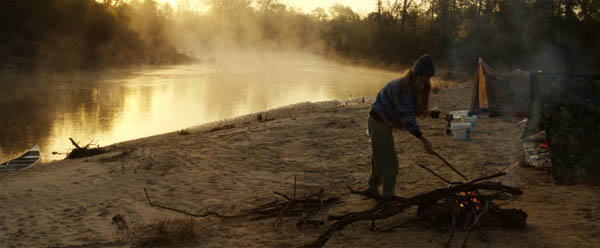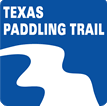Neches-Davy Crockett Paddling Trail
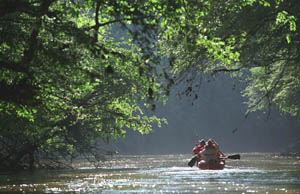
This 9.2-mile trail makes a perfect morning or afternoon paddle with friends and family. Enjoy the beauty of East Texas as you silently paddle through the Davy Crockett National Forest.
- Getting There
- Trail Description
- Map
- Fishing
- Wildlife & Ecology
- Private Property
- Events & Attractions
- Partnership
- Rentals & Shuttles
Getting There
Two access sites:
Put-in - CR 1155 (Anderson Crossing)  31°26’ 40.57” N, 95° 20’ 30.14” W
31°26’ 40.57” N, 95° 20’ 30.14” W
Take-out - State Highway 7  31° 23’ 48.18” N, 94° 57’ 55.76” W
31° 23’ 48.18” N, 94° 57’ 55.76” W
Put-in: CR 1155 (Anderson Crossing)
From Lufkin, take State Highway 103 west. It will merge with State Highway 7 just before the Neches River. Approximately 4.6 miles west of the Neches River on SH7, turn right on Forest Service Road 511 (you will pass several roads with locked gates before this. Road 511 has no gates). There is a small sign denoting the road at the treeline, but it is not obvious. Take Forest Road 511 until you come to County Road 1155. Turn right on CR 1155 and go straight until you come to the river. You will pass one minor bridge over an oxbow; the bridge for the river is just past that smaller bridge. Anderson Crossing has a small boat launch area on the right with a couple of parking spaces. Look for the paddling trail sign. The drive from Highway 7 up Forest Road 511 and CR 1155 takes about 15 minutes and is a good dirt road.
Take-out: State Highway 7
From Lufkin, take State Highway 103 west. It will merge with State Highway 7 just before the Neches River. The turn-off is on the left (south) side of the road at the Frank Ashby Road turn-off. The turnoff is approximately 12.3 miles west of Loop 287/SH103 intersection in Lufkin.
Distance from nearest major cities:
- Austin - 231 miles
- Bryan/College Station - 125 miles
- Corpus Christi - 335 miles
- Dallas - 173 miles
- Fort Worth - 204 miles
- Houston - 123 miles
- San Antonio - 297 miles
- Waco - 164 miles
Map
Trail Description and Landmarks
Trail Length: ~9.2 miles
Float Times: ~3 - 6 hours (depending on water level, flow rate and wind speed)
This stretch of the Neches is well known for the Neches River Rendezvous, an annual float trip hosted by the Lufkin/Angelina County Chamber of Commerce, the Lufkin Convention and Visitors Bureau and Temple-Inland, Inc. This river segment is great for a family outing even though there are occasional logjams and snags to avoid, especially when water is low. A variety of water types including quiet pools and several small riffles are present. There are no man-made obstructions.
Fishing
Once used as a main food source for early settlers, the Neches River is still home to the native species of freshwater fish in East Texas. The mainstay of this historic fishery is catfishing. Rod and reel fishing is the most used technique for catfish, while a more effective technique used is the limb line. Neches River largemouth bass seem to be more active than their lake counterparts; therefore, river bass are smaller but much more fun to catch. A unique species in this wild river and sometimes overlooked is the buffalo fish. These “rough” fish congregate in deep holes in the spring and are susceptible to live crawfish on small, weighted hooks.
Perch including bluegills and crappie are fished in the Neches using worms (nightcrawlers or earthworms) or small jigs. The prehistoric alligator gar sliding just under the surface is a common fish sighted on the scenic Neches River while fishing. This gar is the largest freshwater fish in the river and can weigh over 300 pounds. Few anglers fish for alligator gar because they are difficult to hook and more difficult to clean for eating.
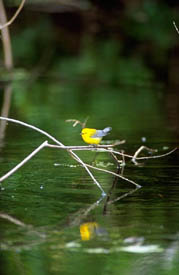
Wildlife and Ecology
The Neches River is truly one of Texas’ wildest and least-discovered natural assets. Its sometimes steep, heavily wooded banks and bluffs grow a combination of pines and hardwoods – oak, hickory, dogwood, hackberry, pecan and blackgum. Birds spotted here include Prothonotary Warbler, Northern Parula, Summer Tanager, Barred Owl, Pileated Woodpecker, Wood Duck and Belted Kingfisher. Common wildlife include squirrel, raccoon, deer, coyote, opossum and feral hog.
Private Property
Respect private property by not trespassing or littering and keeping noise levels down. This creek is classified as navigable, which permits public use of the streambed and, if necessary, the banks to portage any hazard. Any other use of private river banks without permission of the landowner can be considered trespassing. Under Texas Penal Code (§30.05), criminal trespass occurs when one enters property after receiving notice not to enter. Notice includes verbal notice, a fence, sign(s), purple paint on posts or trees, or the visible presence of crops grown for human consumption.
Events & Attractions
For more information please see the Paddling Events calendar.
Texas Forestry Museum
1905 Atkinson Drive
(Texas Highway 103 East- several blocks west of East Loop 287)
936-632-9535
Monday – Saturday 10 a.m. – 5 p.m.
Sunday 1 p.m. – 5 p.m.; Free
Located in the heart of the East Texas Pineywoods, the Texas Forestry Museum is one of the largest museums of its kind in the United States. The museum offers a look at historic and contemporary development of one of Texas’ oldest industries: forest products. Featured exhibits include a Paper Mill room, sawmill town exhibit, logging locomotive and depot, forest fire lookout tower, modern management practices and an Urban Wildscape Trail.
Ellen Trout Zoo/Lake/Park
North Loop 287
936-633-0399
Sunday – Saturday 9 a.m. – 5 p.m.
4yrs and up – Fee; Children under 4yrs. old free
Ellen Trout Zoo is acclaimed as one of the finest small city zoos in the nation. This beautiful zoo provides homes to nearly 800 wild and exotic creatures from around the world, including many on the endangered species list. Featured among the exhibits are diverse collections of reptiles, waterfowl and small mammals. Siberian Tigers are found in a temperate forest and Jaguars roam an ancient Mayan temple. Tropical Asia offers more exhibits showcasing rare species such as Clouded Leopards, Siamese Crocodiles, Pythons, Blackbuck and exotic birds. White Rhinoceroses and Maasai Giraffes can be seen roaming the lushly landscaped African habitat. See the only Hippoquarium exhibit in the south central United States featuring Nile Hippopotamus.
Take a ride on the miniature pre-Civil War train replica around the lake and through the beautiful pine trees while enjoying excellent bird watching. You just might catch a glimpse of a Bald Eagle in the wild! If sitting and relaxing is more your style then come enjoy a picnic lunch by the lake but make sure you watch out for the alligators!
Ratcliff Lake Recreation Area
936-655-2299
Lake Ratcliff, located in the heart of the Davy Crockett National Forest, offers swimming, boating (no gas motors), picnicking, hiking and fishing. It is located approximately 15 miles east of Crockett, TX on State Hwy 7 east. This National Forest has hardwood and pine forest, excellent hiking and camping for tents, RVs and groups large and small. The campground surrounds a small 45 acre lake. Fire permitted in fire rings only. Pets must be on a leash at all times. No alcohol or pets on beach. The 19.7 mile Four C Hiking Trail begins at Lake Ratcliff and ends at the Neches Bluff overlook.
Lake Sam Rayburn
Located in the heart of the Angelina National Forest in five counties, Lake Sam Rayburn is the largest lake in Texas with a shoreline of 570 miles. It is located about 9 miles from Lufkin. This lake is known for some of the best bass fishing in the state and also for excellent water skiing.
Cassels Boykin Park
Cassels Boykin Park is located in the mid-lake area of Lake Sam Rayburn. This area is known as one of the best locations in Texas for Largemouth Bass due to its flooded timber, lily pads, channels and drop-offs. Cassels Boykin Park with its close proximity to great bass fishing, a large pavilion, and ample trailer parking, is a great place to have a large fishing tournament, wedding or reunion. Currently in the works for Cassels Boykin is birding, hiking and biking trails. Stay tuned for more information. For booking information contact Tara Watson-Watkins at 936-633-0349.
Museum of East Texas
503 N. Second Street
936-639-4434
Tuesday – Friday 9 a.m. – 5 p.m.
Saturday – Sunday 1 p.m. – 5 p.m.; Free
Seven women had a dream in 1972, a dream to transform the burned out shell of the former St. Cyprian’s Episcopal Church into an arts and historical center for the children and families of East Texas. Since its inception in 1976, the Museum of East Texas has grown to become a dynamic cultural center. Housed in a historic 1905 church, the Museum contains an extensive collection of paintings and sculptures produced by East Texas artists as well as American, Latin American and European masters. The Museum offers a variety of public programs throughout the year and its commitment to visual arts education and cultural enrichment is the driving force behind all of its programs. Exhibitions, lectures, workshops, children’s events and fundraisers cover a wide range of interests and topics and are sure to appeal to everyone. Come visit us and see what wonderful things we have in store for you.
The History Center
102 N. Temple Drive, Diboll
936-829-3543
Monday – Friday 8 a.m. – 5 p.m.
Saturday 9 a.m. – 1 p.m.; Free
The History Center is a new public history and archives center that collects, preserves, and makes available the history of our region for the educational use and benefit of present and future generations. Providing research opportunities is the core of their mission, and their holdings include manuscripts, business and local government records, maps, newspapers, oral histories, books, and more than 200,000 photographs. They also have exciting exhibits both inside and out that help interpret the Center’s growing collections as well as the area’s rich cultural and natural history.
The History Center is designed in the Craftsman architectural style, highlighting the natural beauty and function of wood. This is especially evident in the interior spaces, where native pine and cypress make up the floors, walls, and ceilings. Locally made Stickley-styled quarter-sawn white oak furniture is used throughout the reading room and other public areas.
Adding to the Center’s natural beauty is a landscape design which features East Texas native grasses, plants and trees. Among the trees are loblolly pine, white oak, bald cypress, sycamore, shumard oak, swamp chestnut oak, red maple, and eastern red bud. Grasses and plants include gulf muhly, bluestem (little, big, and splitbeard), switchgrass, Indian grass, wax myrtle, crossvine, carolina jasmine, Virginia sweetspire, “Dam B” wisteria, and coralberry. Take stroll through this beautiful scenery on the walking trail which will connect you to Old Orchard Park.
Partnership
This trail was made possible through a partnership between Texas Parks and Wildlife Department, Lufkin Convention and Visitors Bureau, and The Conservation Fund.
Shuttles & Rentals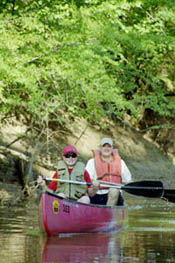
Tack-A-Paw Expedition
Danny Rowzee
Leesville, LA 71496
337-286-9337
1-800-256-9337
T-A-P Is Located On Hwy 392 (LA) Two Miles From Toledo Bend Dam, 2340 Toro Road. Rentals for groups of 10 or more canoes only; advance reservations only.
Adrian VanDellen
guide services only, no canoe rentals
Jim Lemon
Canoes, kayaks, guide service (prefer youth groups – scouts, etc)
936-615-5053 (best way to contact)
Shawl Canoe School
Shuttle, canoes, guide
Lumberton, TX 77657
409-791-0040 (cell)
